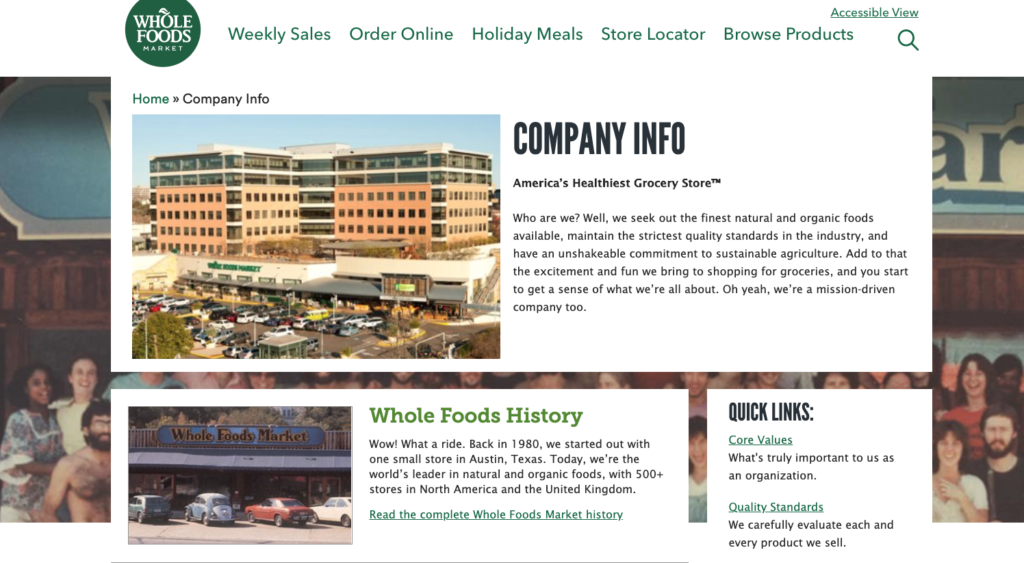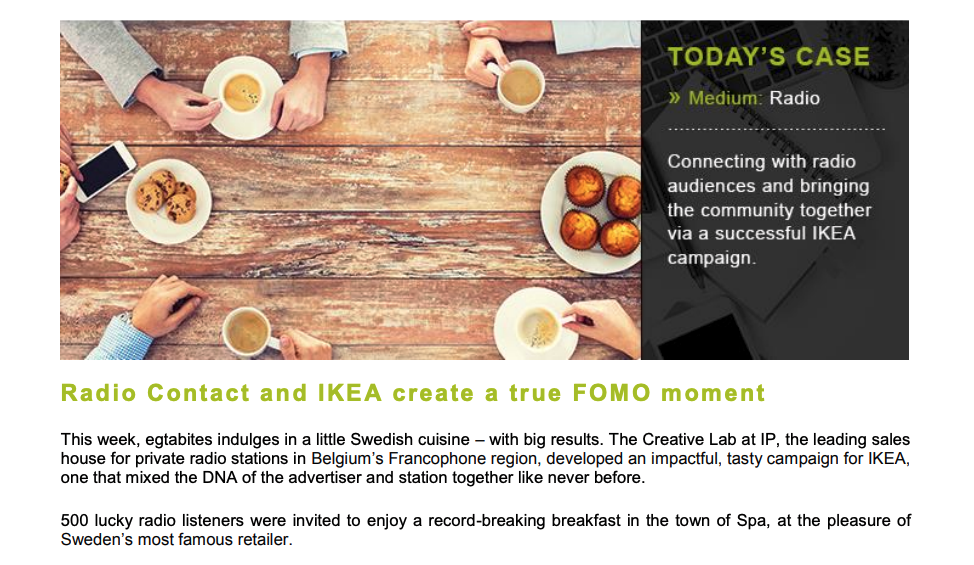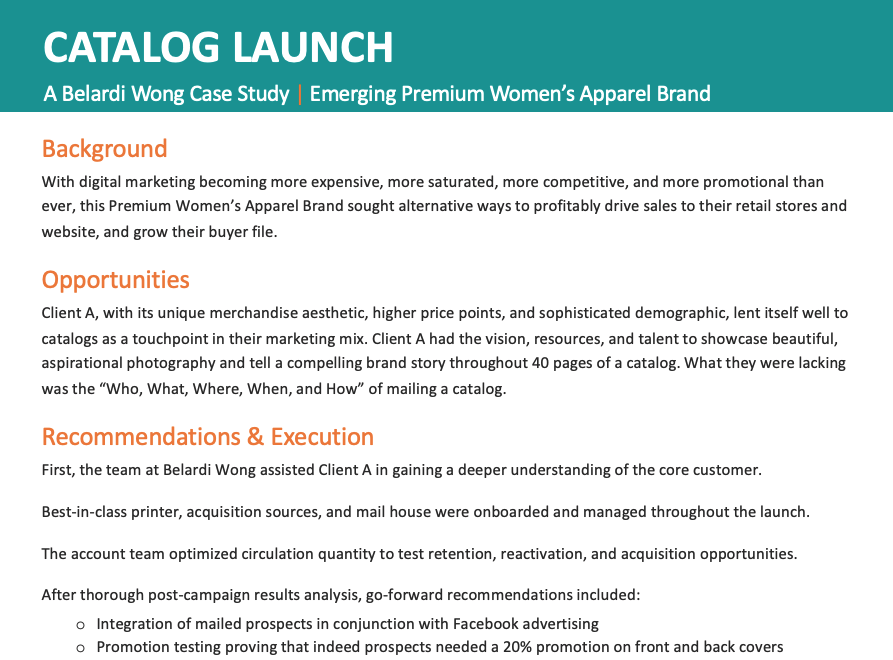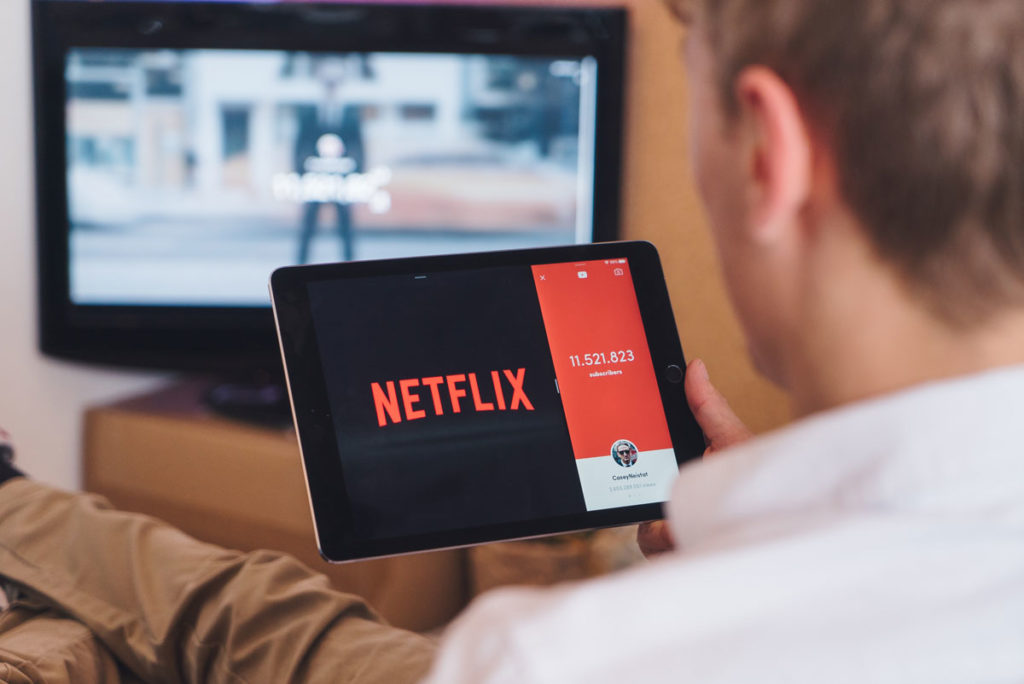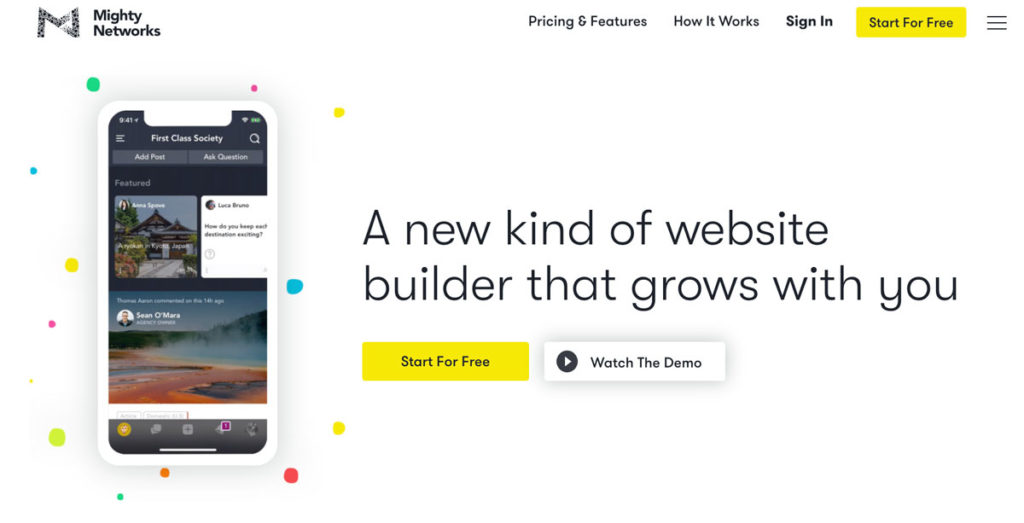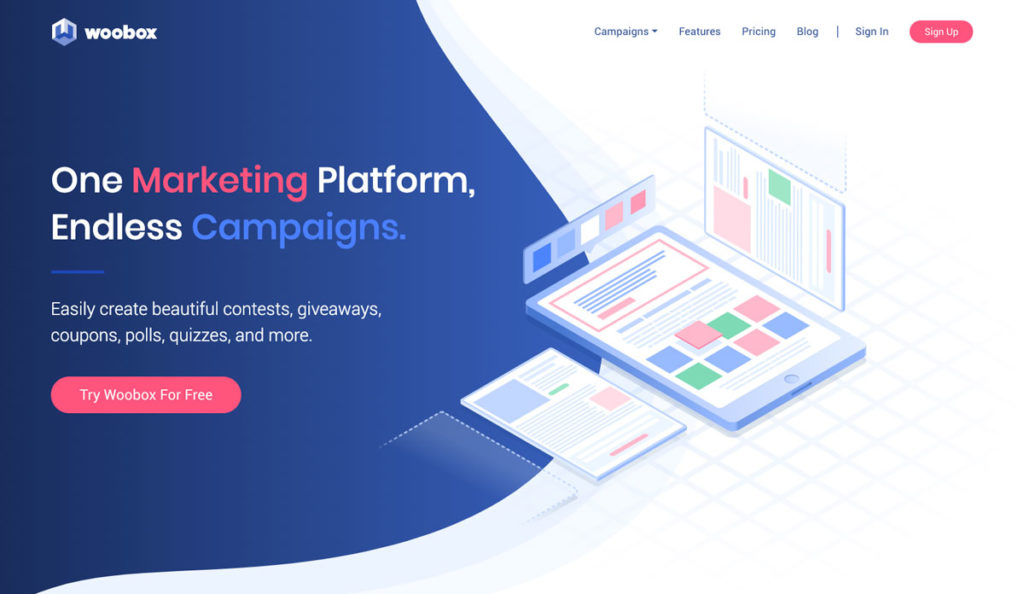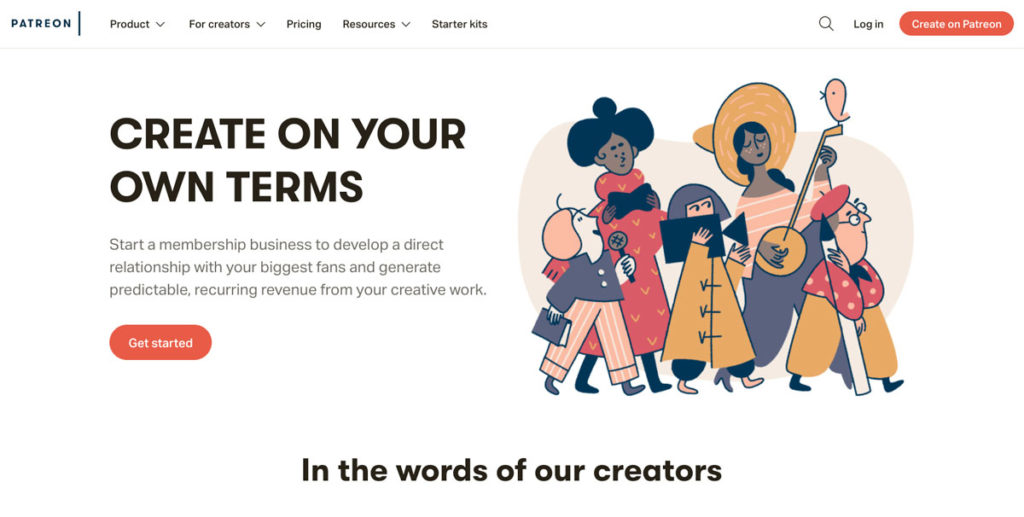FOMO (Fear Of Missing Out) is one of those concepts that marketing gurus love to talk about. But guides on the topic tend toward the theoretical. In this post, we’ll pull the curtain back, revealing must-know strategies that you can use right now to grow your customer base.
Over time, employing these strategies can help turn your brand into a household name.
Read on.
Brand Positioning Strategy
Brand positioning strategy and FOMO go hand in hand. But there are two elements of brand strategy you must understand before you employ FOMO-generation techniques. If you miss these first two elements, all the work you do later may be for naught.
Brand positioning is, when you get right down to it, all about real estate. It’s about the space you want to own in the customer’s mind. When the average consumer thinks soda, they think either Coke or Pepsi. When they think of athletic clothing or shoes, they think Nike or Adidas.
Now think of your own brand. What are the benefits you offer?
What do you want to be known for?
Effective brand positioning does two things:
- It highlights your competitive advantage. This differentiates you from the crowd and helps customers understand why they should pick you over your competitors. The following companies have done this exceptionally well: Lush, Airstream, T-Mobile, Whole Foods.
- It refines customer relevancy. Brand positioning helps you select a core target segment. For instance, Google’s recent gaming service, Stadia, clearly targets casual PC gamers. These are individuals whose gaming hardware is not up to the task of playing modern PC games. Google knows that their service does not appeal to ‘hardcore’ PC gamers who have more powerful computers, so the tech giant will not waste resources trying to appeal to those consumers.
Let’s take a look at a few examples of each component of the brand positioning strategy before moving on to FOMO (Fear Of Missing Out) techniques.
Competitive Advantage
Whole Foods differentiated itself early on with its content marketing. Savvy content production allowed the consumer packaged goods manufacturer to become a thought leader in their space. See the case study, Whole Foods Market Case Analysis for an in-depth analysis of the firm’s strategy.
Whole Foods set out early to establish themselves as a thought leader. They were one of the first CPGs to eliminate plastic bags—way back in 2008. They host multiple events each year, have a very active blog and even a mobile app.
T-Mobile, on the other hand, differentiated itself by catering to a niche audience, namely younger consumers. Moreover, the company targeted urban millennials who don’t want to be tied down or ‘owned’ by their cellular provider. The company creates messaging that speaks to the pain points of these consumers. This messaging makes one thing clear. Because they’re catering to a smaller pool of customers, they have ample resources to provide unique, advanced features. That’s a competitive advantage.
It’s the difference between a surgical strike and a shotgun approach.
Customer Relevancy
Nike gears its product development toward performance athletes, and a good deal of its marketing is also targeted to this demographic. Gatorade, similarly, positions itself as a sports drink for high-performance athletes. Yet both products are used and enjoyed by casual athletes every day. The irony—and the takeaway—is that neither brand would have achieved their status in our culture had they started out as a product for Joe Everyman. It is precisely because of tight targeting that they came to be ‘cool,’ and thus relevant.
As we will see, you can use FOMO to enhance and underscore both competitive advantage and customer relevancy, bolstering your brand positioning strategy along the way.
What is FOMO (Fear Of Missing Out)?
As you read the following section, think about the luxury goods industry. if you’ve ever walked into a shop with no intention of buying anything, yet you walked out with a gold watch you did not need, you can be sure that the salesperson used FOMO against you. FOMO is a powerful tool, but moving luxury goods is far from its only use.
In the previous section, we referred to the fact that Nike and Gatorade became cultural icons despite tight targeting and marketing designed to appeal to a niche demographic—hardcore athletes. How can this be? The answer: FOMO, or fear of missing out. FOMO is a psychological effect that we’re all susceptible to, and it is deeply rooted in our collective memory.
Consider the following scenario.
Ug and Nug are cavemen. They’re out hunting, and they haven’t eaten anything substantial in a few days. Finally, near the end of their endurance, they come across an old, haggard woolly mammoth that’s been separated from its herd. Ug and Nug are able to take this lone mammoth down and are thus able to provide for their families.
Yet, as Ug and Nug head back to camp with the spoils, they can’t help but lament the fact that they didn’t get a younger, fitter mammoth—a bigger animal that would have provided more meat.
This is FOMO (Fear Of Missing Out).
Instead of thinking of the food they now have, Ug and Nug are imagining having secured an even greater bounty. What is driving this mindset? Scarcity.
In modern times, this is how brands that cater to a niche audience become household names.
Because Nike creates products for top athletes, consumers want to be associated with their brand.
If consumers don’t have access to Nike products, they feel a jolt of fear. They fear being excluded. They fear being ridiculed. They fear missing out on prestige.
Notice something? Ug and Nug were fearing for their lives. Yet modern consumers respond with a similar level of fear over…clothes.
Key takeaway: the fear of missing out creates a strong emotional reaction in us.
Therefore, FOMO is a powerful tool when it comes to building your brand. If you generate an air of scarcity or exclusivity around your product, you’ll find it easier to make a name for yourself.
However, it’s important to keep the principles from the previous section in mind: your competitive advantage and your targeting. In fact, everything you do regarding FOMO should stem from those two aspects of brand positioning.
How Does FOMO Aid Brand Building?
Another way to think of FOMO is low-grade regret. When we see someone doing something exciting or fun, we want to be a part of that. If we can’t, we feel regret. The brain is geared to move us toward pleasurable or rewarding activities and away from painful activities. Being left out is painful.
Of course, we’re not suggesting that you center all of your marketing or messaging around FOMO. However, you’re in the business of gaining market share and earning a profit. If your competitors are using FOMO tactics, can you afford to rest on your laurels?
You can be sure that your savviest competitors are using FOMO. Social media makes it easier than ever to spread FOMO messaging. Social media marketing, in particular, is the FOMO marketer’s dream. We’ll get into specific strategies in a later section, but for now, be aware that using FOMO in 2020 consists of:
- Specific strategies that allow you to attract new customers
- Strategies that allow you to skyrocket social media engagement
- FOMO marketing tactics including video marketing strategies
Over time, these FOMO marketing techniques can substantially improve your brand positioning.
FOMO Case Studies
In this section, we’ll touch upon two case studies that leveraged FOMO in different ways. The first campaign took advantage of the social aspects of FOMO. The second case study utilized FOMO in a different way, by helping a brand create a more compelling offering. The optimized offering triggered fear of missing out in the target audience. The first approach relies on our social nature, while the second works on an individual level. Both approaches are valid.
IKEA
In our first case study, IKEA created scarcity by inviting a limited number of Belgium citizens to a public breakfast. The town of Spa hosted the event, and numerous residents were invited to participate. IKEA partnered with Radio Contact, one of the region’s most popular radio stations, to make the event happen.
The public breakfast showcased IKEA’s expertise in table decoration and helped promote their brand. The hook, the critical element that got people excited about the event, was the brainchild of Creative Lab, a promotional agency for the area’s radio stations. The event’s sponsors, IKEA and Radio Contact, would try to break the world record for the biggest feel-good breakfast.
The event was advertised on radio, TV and social media. Additionally, Radio Contact employees and representatives toured towns in the region to raise awareness. IKEA, for their part, leveraged the data they had on customers and created targeted ads. Specifically, the company used data from its database of IKEA Family cardholders.
Results
IKEA and Radio Contact broke the world record, hosting 500 people for breakfast. Food was served on an elegant 117-meter table designed by IKEA. As you might expect, the event was broadcast on TV, radio and Facebook Live.
Imagine you’re at home watching this event. You missed out on the free food. Shucks. But the mere fact that you missed out on a sponsored event means that you could miss out on such an event in the future. This creates FOMO. What do you do? You subconsciously pay more attention to the sponsors so you don’t miss out on future opportunities.
By partnering with another entity—who consequently shared the cost burden—IKEA increased its brand profile.
A High-End Women’s Apparel Brand
In our second case study, an emerging premium women’s apparel brand uses FOMO to build brand presence. The brand in question, known in the case study as Client A, had the ability to create stunning images for their catalog. However, they lacked the ability to build a catalog that would appeal to a niche, or target, audience.
Results
The case study details the process of helping Client A better define and targets their ideal customer. The ability to do so is imperative if generating FOMO is the goal. Without a focus, you can’t trigger fear of missing out as your messaging will be generic.
It’s difficult to position yourself as a high-end brand if you don’t have a firm understanding of who your target audience is.
Use FOMO to Attract Customers
In this section, we’ll explore three ways you can generate FOMO around your products. These tactics, over time, will help establish your brand as a go-to solution.
Influencers
One of the best ways to leverage FOMO to gain new customers is to strike up a deal with an influencer. Everyone has that Facebook friend who seems to have it all. You know the type. It’s that person who is always on a trip, eating amazing food or sipping fancy wine. We see these people in our social media feeds, and we want to be like them.
But influencers, people who are well known in a given niche, have the same impact on people.
When people see these influencers using—and enjoying—your product on Facebook, Instagram, Pinterest or some other well-trafficked social media network, they’ll experience FOMO.
Utilize influencers to get potential customers to think, I want to get in on that action.
Word of Mouth & Social Proof
Word of mouth remains a powerful form of advertising, even in the age of social media and instant communication. People trust what their friends have to say. To some degree, all people rely on groupthink or the wisdom of crowds. In other words, your peers help you figure out what’s worth investing time, money or energy into.
This wisdom of crowds concept is why Yelp is so successful. Consumers want to see a social proof before they invest. They want to know what kind of experience other people had before they go themselves.
74 percent of customers rely on word of mouth when it comes time to pick between two brands. To generate FOMO via word of mouth, focus on delivering stellar customer service. To learn all about that, look no further than Zappos. See the case study, The Loyalty Effect: Build and Protect Market Share One Customer at Time, for more info—after finishing this guide, of course.
Exclusivity
It should come as no surprise that one of the best ways to gain new customers via FOMO is by offering exclusives. Granted, this is easier in, say, the restaurant business than it is in the digital entertainment space. In the former case, you’re selling a physical product that is hard to replicate at home. In the latter—think Netflix or Disney+—you’re selling a digital good that customers can acquire on sites such as The Pirate Bay. Still, there is always some way to create exclusivity.
It’s worth noting that scarcity and exclusivity are not the same things.
Scarcity implies that there is only so much of a product to go around. True scarcity always leads to FOMO. Exclusivity, on the other hand, implies that not everyone can get their hands on the product, regardless of available stock. Exclusivity can also lead to FOMO.
A few things will make your target audience want your product more than telling them they can’t have it. There are two main ways to create exclusivity:
- Reduce the frequency of new product announcements. Apple doesn’t come out with a new product every quarter. The time product announcements carefully. Keeping their product lineup slim while focusing on quality allows them to charge a higher price than their competitors. A high price, plus high quality, create exclusivity. Everyone can get a smartphone, but not everyone can get an iPhone.
- Reduce the total number of initial customers. You can create an artificial, and quite arbitrary, an aura of exclusivity around your product by denying people access to it. Once you’re sure you’ve worked out all the bugs, offer it to influencers first. Make other people wait. It may be hard to believe, but some people will even pay to be on a waiting list.
- Create loyalty or reward programs. Netflix and Disney+, could, for instance, incentivize people to pay for their services by offering a loyalty program that rewards the user in some way. If the user knows they’ll gain something down the line by watching exclusive content on the platform, they’re less likely to pirate. In this case, the user fears missing out on the promised reward, and they’ll pay the low monthly fee to get it, eventually.
Use FOMO on Social Media to Generate More Business
These days, one of the best places to generate FOMO is on social media. Social media offers a glut of immediate gratification. So when we come across something that doesn’t provide instant gratification, it piques our interest.
Here’s how to generate FOMO on social media.
#1 Increase Social Media Activity When You Launch New Products
This should go without saying, but we would be remiss if we didn’t bring it up. Don’t go dead on social media when you’re launching a new product. Do the opposite. People love new experiences, so if you have a new product, service, gadget or gizmo, let people know. When you’re launching a new product, use the other tactics on this list more aggressively.
#2 Incorporate Social Proof into your Ads
If you’re already advertising on platforms like Facebook, then you’ll love this tip. It’s great to have a product image on your Facebook ad, but adding an element of social proof to your ad will drive conversions through the roof.
Consider adding:
- A celebrity or influencer endorsement
- A brief customer testimonial or product review
- Total number of units sold
Advanced: When targeting a customer for the first time, use testimonials or product reviews. When retargeting, use store reviews instead of product reviews. The customer is already familiar with your product. What they need in order to buy now is confidence in your brand.
#3 Add a Time Limit & Enforce it
Put a time limit on the product you’re trying to promote. This will allow you to create urgency. Urgency leads to FOMO. Consumers are accustomed to seeing messages like, ‘Only 24 hours left!’ But if you put a time limit on your special and actually follow through, your messages will have more weight. The key is consistency.
You can use this tactic with emails, too. Try a simple message like the following:
This offer ends today. So if you want access to ___, follow the link below.
Make your proposition and then get out of the way.
#4 Offer a Lead Magnet
A good lead magnet is one of the most important inbound marketing tools out there. It’s also a marvelous FOMO tool. We’ve all been tempted by the free guide or PDF download. The key here is to provide valuable information that is relevant to your product.
A good lead magnet offers a genuine solution. You don’t have to give away the whole pie here. But offering up a slice for free will help you in the long run. You’re trying to build an awakened brand, after all.
The lead magnet generates FOMO by triggering a desire for instant gratification.
Note: If the lead magnet isn’t worth giving up their email for, you can be sure they’ll banish you from their inbox when you send them follow-up messages.
#5 Create a Closed Group
An invite-only group on a popular social media site is a great way to drive FOMO. For instance, it’s easy to create a private Facebook group. You can seed the group by inviting loyal customers. Then generate special coupon codes available only to that group. Word will get around. Slowly let more people into the group.
Another platform that we use for our Brand Builder Academy is Mighty Networks. It is such an awesome private group platform that you can actually run your whole business from it.
This has several advantages, not the least of which is that you’ll end up with a private platform that gathers fans and encourages them to buy your products.
#6 Hold a Contest
Without a doubt, one of the best ways to generate FOMO on social media is to hold a contest. A user-generated content contest is usually the way to go. This way, the entrants are doing most of the work. You can hold a contest for the best image, best artwork, best blog post—best whatever you want.
UGC contests often go viral, which brings traffic to your social media platforms and website. Consequently, these contests can bolster all of your other social media FOMO endeavors.
Note: Make sure that the first, second and third place prizes are worth competing for. The number of entrants you attract will be directly proportional to the value of the prizes on offer.
There are several platforms that help with hosting contests, such as Woobox, Gleam, and Wishpond. Don’t reinvent the wheel. You have better things to do.
#7 Gate Some of Your Content
If you’re building a reputation as a thought leader in your space—you are, aren’t you?—don’t just give that wisdom away for free. At the very least, gate some of that content. You can use your private Facebook group for this, or a private sub-Reddit. Or Patreon. Whatever you do, don’t just give your best content away for free. Assuming you provide high-quality, high-value content, gating some of it automatically generates FOMO.
We hope this concise guide has given you a few ideas about how you can build your brand using FOMOs. Remember: even if you don’t use these tactics, your competitors still will.
If you found this guide helpful, consider giving us a share.

